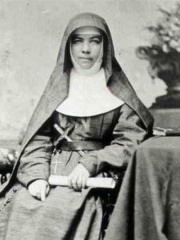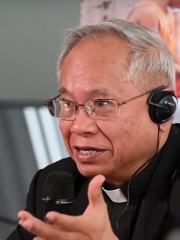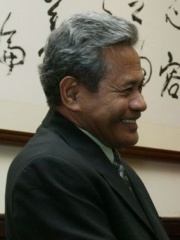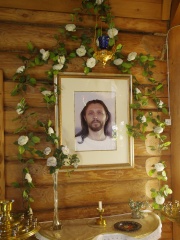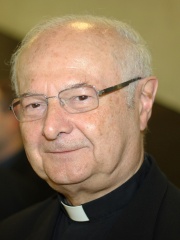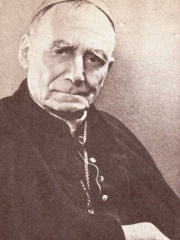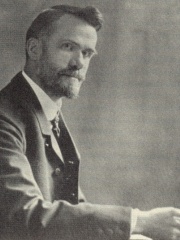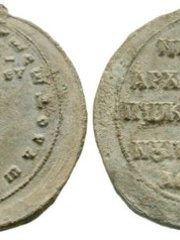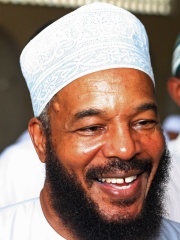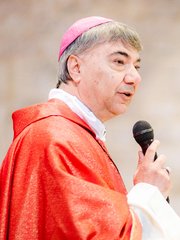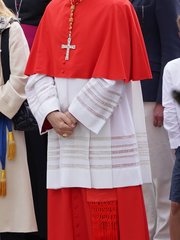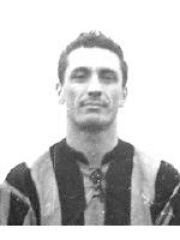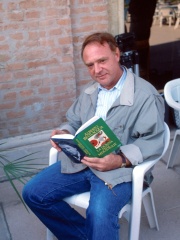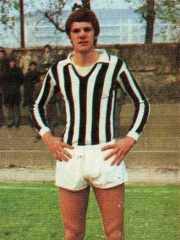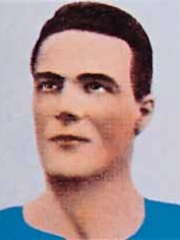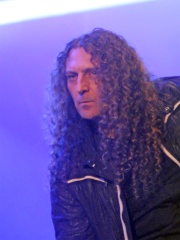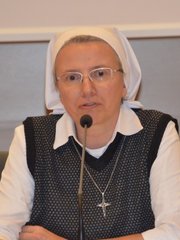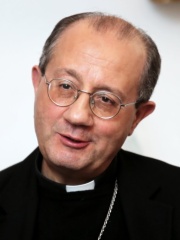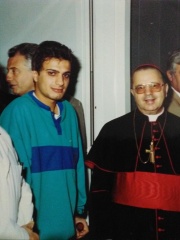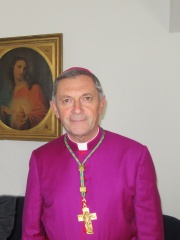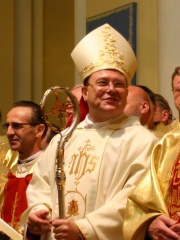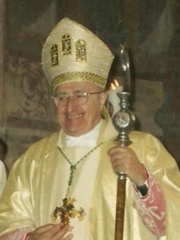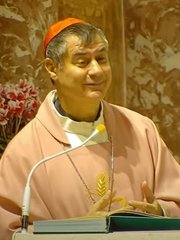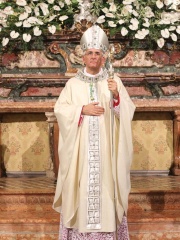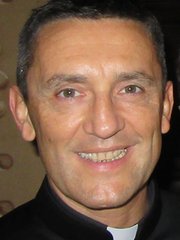RELIGIOUS FIGURE
Paulinus of York
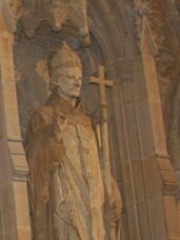
 Paulinus of York
Paulinus of York
Paulinus (died 10 October 644) was a Roman missionary and the first Bishop of York. A member of the Gregorian mission sent in 601 by Pope Gregory I to Christianize the Anglo-Saxons from their native Anglo-Saxon paganism, Paulinus arrived in England by 604 with the second missionary group. Little is known of Paulinus's activities in the following two decades. After some years spent in Kent, perhaps in 625, Paulinus was consecrated a bishop. Read more on Wikipedia
His biography is available in 22 different languages on Wikipedia. Paulinus of York is the 2,967th most popular religious figure (down from 2,922nd in 2024), the 4,047th most popular biography from Italy (up from 4,069th in 2019) and the 555th most popular Italian Religious Figure.
Memorability Metrics
Page views of Paulinus of York by language
Among RELIGIOUS FIGURES
Among religious figures, Paulinus of York ranks 2,967 out of 3,187. Before him are Serafim Fernandes de Araújo, Mary MacKillop, Orlando Quevedo, Filoimea Telito, Vissarion, and Robert Zollitsch. After him are José María Caro Rodríguez, Walter Rauschenbusch, Nicholas II of Constantinople, Bilal Philips, Domenico Battaglia, and François Bustillo.
Most Popular Religious Figures in Wikipedia
Go to all RankingsSerafim Fernandes de Araújo
1924 - 2019
HPI: 53.24
Rank: 2,961
Mary MacKillop
1842 - 1909
HPI: 53.21
Rank: 2,962
Orlando Quevedo
1939 - Present
HPI: 53.20
Rank: 2,963
Filoimea Telito
1945 - 2011
HPI: 53.19
Rank: 2,964
Vissarion
1961 - Present
HPI: 53.16
Rank: 2,965
Robert Zollitsch
1938 - Present
HPI: 53.16
Rank: 2,966
Paulinus of York
HPI: 53.09
Rank: 2,967
José María Caro Rodríguez
1866 - 1958
HPI: 53.04
Rank: 2,968
Walter Rauschenbusch
1861 - 1918
HPI: 53.03
Rank: 2,969
Nicholas II of Constantinople
HPI: 53.01
Rank: 2,970
Bilal Philips
1947 - Present
HPI: 52.97
Rank: 2,971
Domenico Battaglia
1963 - Present
HPI: 52.96
Rank: 2,972
François Bustillo
1968 - Present
HPI: 52.94
Rank: 2,973
In Italy
Among people born in Italy, Paulinus of York ranks 4,048 out of 5,161. Before him are Ivano Blason (1923), Cristian Zaccardo (1981), Guido Vincenzi (1932), Armando Segato (1930), Raf (1959), and Alberto Bevilacqua (1934). After him are Sergio Caprari (1932), Sergio Brio (1956), Cristiano Zanetti (1977), Fabrizio Romano (1993), Delfo Bellini (1900), and Fabio Lione (1973).
Others born in Italy
Go to all RankingsIvano Blason
SOCCER PLAYER
1923 - 2002
HPI: 53.13
Rank: 4,042
Cristian Zaccardo
SOCCER PLAYER
1981 - Present
HPI: 53.13
Rank: 4,043
Guido Vincenzi
SOCCER PLAYER
1932 - 1997
HPI: 53.11
Rank: 4,044
Armando Segato
SOCCER PLAYER
1930 - 1973
HPI: 53.11
Rank: 4,045
Raf
SINGER
1959 - Present
HPI: 53.10
Rank: 4,046
Alberto Bevilacqua
WRITER
1934 - 2013
HPI: 53.09
Rank: 4,047
Paulinus of York
RELIGIOUS FIGURE
HPI: 53.09
Rank: 4,048
Sergio Caprari
ATHLETE
1932 - 2015
HPI: 53.08
Rank: 4,049
Sergio Brio
SOCCER PLAYER
1956 - Present
HPI: 53.08
Rank: 4,050
Cristiano Zanetti
SOCCER PLAYER
1977 - Present
HPI: 53.08
Rank: 4,051
Fabrizio Romano
JOURNALIST
1993 - Present
HPI: 53.08
Rank: 4,052
Delfo Bellini
SOCCER PLAYER
1900 - 1953
HPI: 53.08
Rank: 4,053
Fabio Lione
SINGER
1973 - Present
HPI: 53.06
Rank: 4,054
Among RELIGIOUS FIGURES In Italy
Among religious figures born in Italy, Paulinus of York ranks 555. Before him are Simona Brambilla (1965), Bruno Forte (1949), Fabio Baggio (1965), Michele Giordano (1930), Egidio Miragoli (1955), and Luigi Ferrando (1941). After him are Domenico Battaglia (1963), Paolo Pezzi (1960), Paolo Magnani (1926), Roberto Repole (1967), Antonio Napolioni (1957), and Giovanni Cesare Pagazzi (1965).
Simona Brambilla
1965 - Present
HPI: 54.07
Rank: 549
Bruno Forte
1949 - Present
HPI: 53.95
Rank: 550
Fabio Baggio
1965 - Present
HPI: 53.94
Rank: 551
Michele Giordano
1930 - 2010
HPI: 53.79
Rank: 552
Egidio Miragoli
1955 - Present
HPI: 53.75
Rank: 553
Luigi Ferrando
1941 - Present
HPI: 53.43
Rank: 554
Paulinus of York
HPI: 53.09
Rank: 555
Domenico Battaglia
1963 - Present
HPI: 52.96
Rank: 556
Paolo Pezzi
1960 - Present
HPI: 52.72
Rank: 557
Paolo Magnani
1926 - 2023
HPI: 52.20
Rank: 558
Roberto Repole
1967 - Present
HPI: 51.16
Rank: 559
Antonio Napolioni
1957 - Present
HPI: 50.59
Rank: 560
Giovanni Cesare Pagazzi
1965 - Present
HPI: 49.95
Rank: 561

